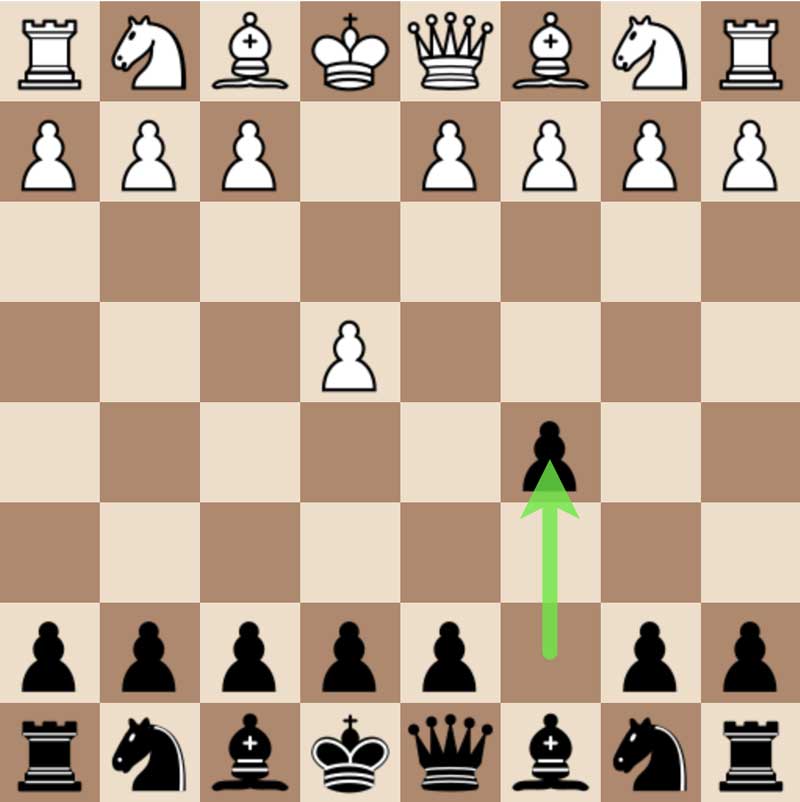On chess forums, you will often see some players and coaches discourage beginners from playing the Sicilian Defense. They think it is too advanced an opening to learn at the basic level against 1.e4. Were you also discouraged from learning this opening?
While there is some element of truth to it, a beginner shouldn’t let that discourage them. In this article, we will cover what are the benefits of studying this opening, what are the main strategies and ideas, and how to study this line.
Since Sicilian is employed with the Black pieces against 1.e4, we are assuming you want to learn this defense from Black’s side.
Benefits of Studying The Sicilian Defense
Fighting weapon – World Champions including Kasparov, Fischer and Kramnik used to religiously play this opening. In 2018, Magnus Carlsen used the Sicilian to neutralize Caruana’s preparation in 1.e4. A lot of top grandmasters use this line to fight for an advantage with the Black pieces.
Dynamic Play – There are lots of tactics and chances to play aggressive chess in the Sicilian. Sacrifices are very common. This will help you improve your dynamic understanding of the game.
No easy draws for White – White has to be in a fighting attitude, when they face this opening. There is no line where they can make an exchange a few pieces quickly and call it peace. If there are any, it’s up to Black whether to keep up the pressure or accept a draw. Compared to 1.e4 e5, where White has many drawish lines(like Four knights), the Sicilian has very few of those.
You might have a question – ‘But the computer shows equal lines. Can’t White play those to make a draw.’ Yes there are such lines. But there is a big difference in equal lines and drawn lines.
In Sicilian, the positions are dynamically balanced. It means for most attacks, there is an equally powerful counterattack. Often the positions which a computer shows as equal are incredibly complicated. Even strong grandmasters can face problems if they aren’t aware of the computer’s best moves. This is why a lot of 0.00 positions(equal according to the machine) are still played very often in the Sicilian Defense.
Lots of options to choose from – 1.e4 c5 is a sharp opening. But one can choose the sub variations, depending on their style. You can choose openings like Najdorf and Dragon, if you love crazy attacking chess that’s rich with complications.
But there are also quieter lines like the Sicilian Accelerated Dragon, Sicilian Classical, Sveshnikov Variation, Sicilian Kann. The variations will be dynamic but at least you don’t have to worry about being checkmated right out of the opening.
Better endgames – In a lot of the Sicilian lines, Black has a favourable endgame position thanks to their better pawn structure. Often if White misplays the opening, they not only run the risk of being violently attacked but also can find themselves in worse endgames.
This is because of Black’s superior pawn structure, which allows their pieces to get good prospects in the latter stage of the game. If you love endgames, this is one opening you can consider.
Main Strategies And Ideas For Black In The Sicilian Defense
Here we will discuss three main ideas that are a central theme in a lot of the variations in this line.
Play on Queenside – In the open Sicilian, after 1.e4 c5 2.Nf3 d6 3.d4 cxd4, there has been a positional trade off. White has the semi-open d-file while Black has the semi-open c-file. Because of the open c-file, one of Black’s ideas is to bring one of their rooks on that file and launch a minority attack on the queenside with …a6-b5, followed by …a5-b4. This way Black targets White’s queenside.
Sacrifice Exchange – Another plan connected with the rook on c-file is to sacrifice it for the White knight on c3. A typical sequence goes like this …Rxc3(exchange sacrifice) bxc3 Nxe4(grabbing the unprotected e4-pawn).
For the lost exchange, Black –
- Weakens White’s pawn structure
- Gains their central pawn on e4.
How effective the sacrifice is often differs for every position. But the two factors given above are often the reason why Black goes for it in the first place.
Pawn Break in the centre with (…d5) – Black’s pawn structure in this opening is very flexible. As a result, they can maneuver their pieces to important squares before changing the structure. White must be very mindful of the pawn breaks that change the character of play.
Often Black waits before they launch the pawn break …d5. When this break is successful, Black’s pieces spring to life out of nowhere. In most cases, it’s enough for equality or an advantage. Sometimes the entire evaluation of a line depends on this pawn break.
As you gain more experience, you will acquaint with the other ideas in the opening. But currently, these should be enough to start.
How To Study The Sicilian?
The best way to learn this opening is by studying the games of great players like Garry Kasparov, Bobby Fischer and Maxime Vachier Lagrave(the current expert in Sicilian Najdorf).
Reading relevant books and watching videos will also help. But don’t forget to practice this opening, either online or with a training partner. That’s how you will learn to use it.
The Sicilian Defense is a mainstream opening employed by some of the best grandmasters in the world. If you are looking to add a dynamic element to your game, this is one opening to consider. It’s also a fighting opening, so be in that state of mind when you employ it.
We hope you are now acquainted with the important ideas in the opening. As you play more games in it, you will become better.


